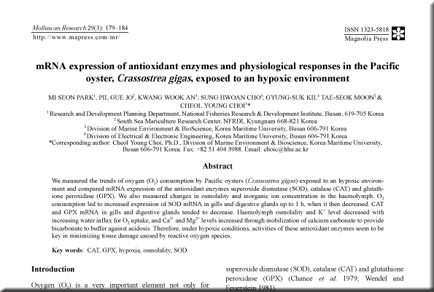Abstract
We measured the trends of oxygen (O2) consumption by Pacific oysters (Crassostrea gigas) exposed to an hypoxic environment and compared mRNA expression of the antioxidant enzymes superoxide dismutase (SOD), catalase (CAT) and glutathione peroxidase (GPX). We also measured changes in osmolality and inorganic ion concentration in the haemolymph. O2 consumption led to increased expression of SOD mRNA in gills and digestive glands up to 1 h, when it then decreased. CAT and GPX mRNA in gills and digestive glands tended to decrease. Haemolymph osmolality and K+ level decreased with increasing water influx for O2 uptake, and Ca2+ and Mg2+ levels increased through mobilization of calcium carbonate to provide bicarbonate to buffer against acidosis. Therefore, under hypoxic conditions, activities of these antioxidant enzymes seem to be key in minimizing tissue damage caused by reactive oxygen species.

